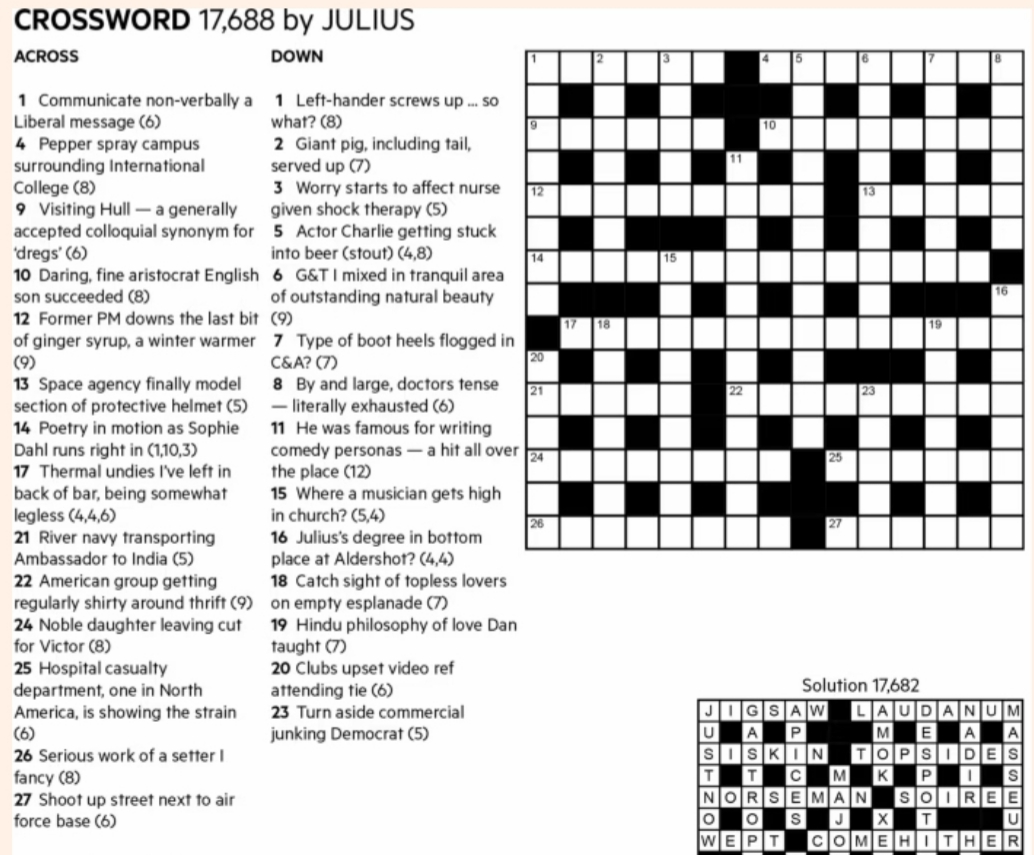Will language models solve cryptic crosswords by end of 2026?
Plus
14
Ṁ3292027
73%
chance
1D
1W
1M
ALL
If a large language model can solve >90% of clues from Financial Times cryptic crosswords then yes otherwise no. Crossword layout as context is allowed.
Here's an example FT crossword:

For example, 2 down is "Giant pig, including tail, served up (7)". Pig is "hog", put tail inside to get "htailog" then reverse it to get "goliath".
Get Ṁ1,000 play money
Sort by:
In isolation or given the crossword layout as context?
I would argue that 90% of the challenge is eliminated by having the crossword as context (number of letters, positions of letters). In fact, I wouldn't be surprised if many cryptic crosswords could be solved without the clues - just the crossword itself.
Without the crossword layout, I think there is a high degree of ambiguity and 90% might be impossible.
Related questions
Related questions
By the end of 2026, will we have transparency into any useful internal pattern within a Large Language Model whose semantics would have been unfamiliar to AI and cognitive science in 2006?
33% chance
Will there be any simple text-based task that most humans can solve, but top LLMs can't? By the end of 2026
66% chance
Will a large language model beat a super grandmaster playing chess by 2028?
67% chance
Will language models be able to solve simple graphical mazes by the end of 2025?
51% chance
Will a Large Language Model save a human life through medical advice by the end of 2025?
90% chance
Will there be an AI language model that strongly surpasses ChatGPT and other OpenAI models before the end of 2025?
45% chance
Will Transformer based architectures still be SOTA for language modelling by 2026?
79% chance
Will we reverse-engineer a language model into an interpretable (python) program by 2027?
8% chance
Will any 10 trillion+ parameter language model that follows instructions be released to the public before 2026?
43% chance
Will someone solve the Scorpion Ciphers by the end of 2032?
38% chance